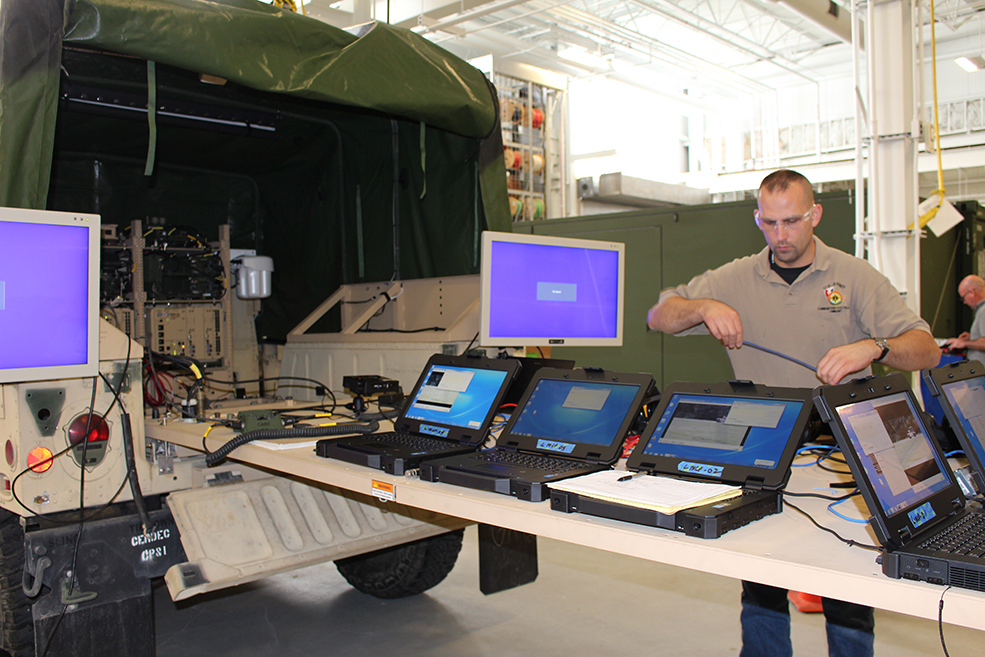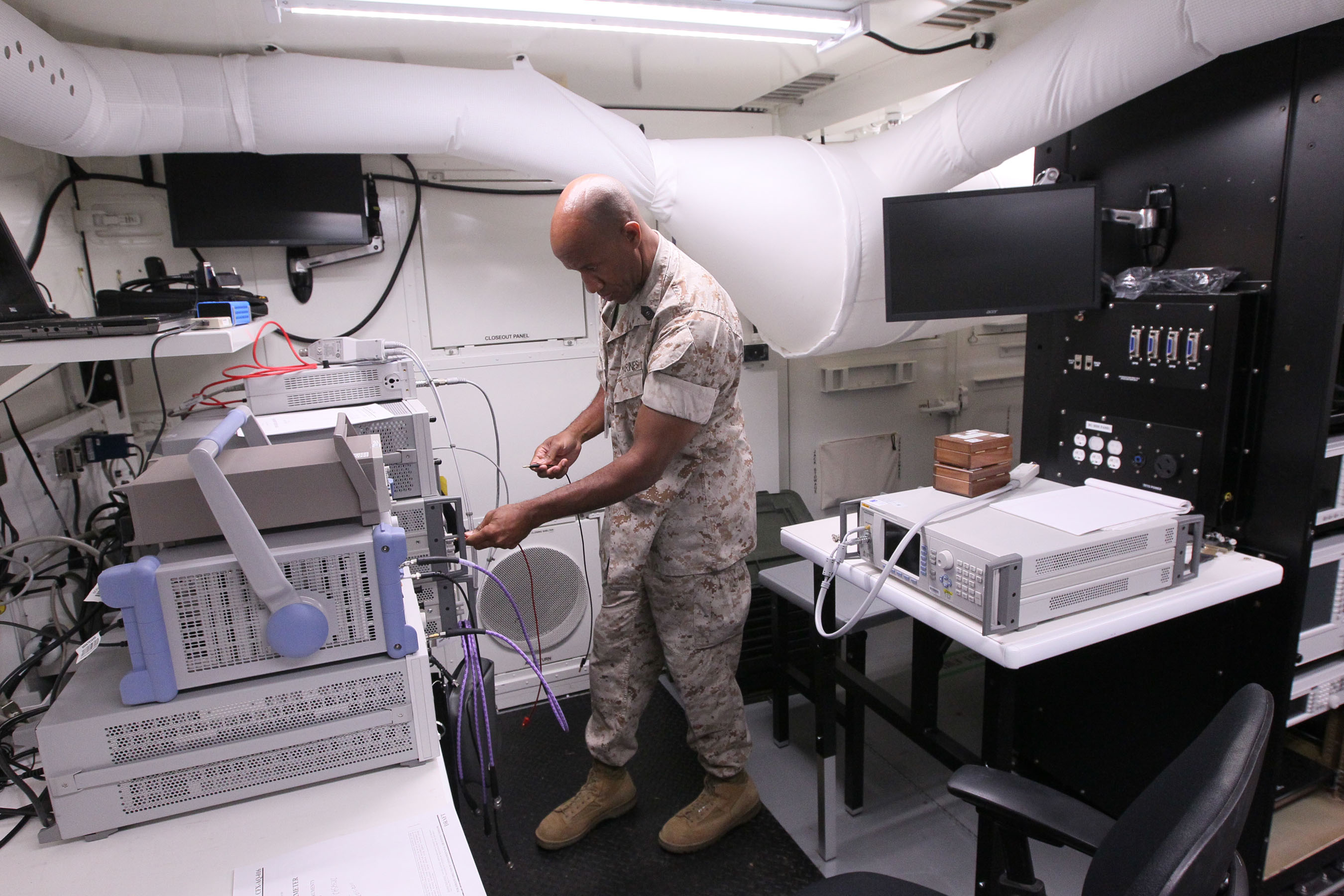
By Daniel Smith and Kathryn Bailey
It’s possible that this is the most expensive phrase in the English language: “We have always done it this way.”
For Army programs of record (PORs), “this way” may be to contract exclusively with industry partners to refresh, upgrade or redesign their systems rather than turning to the government organic base. However, keeping that work in-house can yield substantial cost and time-to-field savings—important drivers for Army force modernization and readiness—often because the government explores commercial off-the-shelf (COTS) options before diving into a custom design.
The government’s prototype integration facilities (PIFs) are positioned to help PORs determine the most cost-effective, streamlined solution available. PIFs perform engineering, design and development, and they are tied to the operational mission of their research and development engineering centers (RDECs). PIF customers are often co-located, which provides them with the opportunity to participate in an iterative design, build and integration process.
PIF managers, electrical and mechanical engineers and technicians possess the experience and the know-how to envision an entire system build while getting to the true “should-cost” values, such as understanding how a simple nut, bolt and screw could cost the taxpayers millions instead of thousands of dollars.
For example, when PORs contract with a vendor to design and integrate a new system or system upgrade onto a military platform, such as a communication system for a vehicle or shelter, they often base the expected costs on the previous contract price—the will-cost. In the case of parts, it would be difficult for PORs to identify the unit cost or duration and the number of units required for the project. PIFs can leverage their expertise to reassess the design for a lower life cycle cost, and therefore calculate the best, or should-cost, target for the parts or systems.

Rodney Young, PIF engineer, leads the integration efforts for the Expeditionary Command Post Capability Lightweight Mobile Command Post, which includes a quick-erect tent, foldout internet-configured table, monitors and a large screen. In the design phase, engineers ensured that all COTS parts could be used throughout the prototype’s integration phase. (U.S. Army photo by Kathryn Bailey, CERDEC)
Another reason PORs retain their original vendors is because those vendors may own the system’s data rights; when it is time for system upgrades, the only option is to give sole-source contracts back to the original contractor for follow-on work. This creates an environment where the government doesn’t have the internal expertise to compete, and the cycle continues.
The Command, Control, Communications, Computers, Intelligence, Surveillance and Reconnaissance (C4ISR) PIF, under the U.S. Army Materiel Command’s Communications-Electronics Research, Development and Engineering Center (CERDEC), has discovered multiple opportunities for cost and time savings on several redesign and upgrade projects for PORs.
The C4ISR PIF performs engineering design and development, fabrication, installation, integration and fielding support for shelter, vehicle, aircraft, watercraft and Soldier prototype C4ISR systems.
On one mobile communications system refresh, the C4ISR PIF team assessed the initial design to identify which parts of the original contractor’s integration they would reuse. However, when it came to procuring the parts required for the system, it became immediately apparent that the cost for components such as racks or smaller things such as screws and nuts procured from the original equipment manufacturer were unusually high.
For example, a contractor’s solution for a rack-leg base mount used to secure equipment racks came to $265. C4ISR PIF engineers redesigned the entire mount to make it universally acceptable across a standard military shelter. They procured a simple sheet-metal part used with COTS parts that cost about $30 per unit. This solution, which met all shock and vibration test requirements, resulted in a $940,000 cost avoidance.
Capitalizing on that success, PIF leadership analyzed other COTS-related cost and time savings. Many of the C4ISR PIF’s integration efforts require engineers to secure C4ISR equipment trays in racks. For one project, the vendor customer built a clip nut for about $25 per unit when a commercially available part that met all requirements cost only $1.50 per unit. At about 28,000 units, the new solution netted $658,000 in avoided costs.
In another instance, a vendor-designed pre-assembled screw cost the POR $2.50 per unit when an acceptable COTS replacement cost only 25 cents per unit. The PIF engineer’s extensive system integration background validated that what some may have thought required custom work was in fact available in the COTS world with an identical form, fit and function. At 80,000 units, using COTS material would have yielded a cost savings of $100,000.

The C4ISR PIF team collaborates to engineer, design, fabricate and integrate critical equipment into small spaces to meet expeditionary footprint requirements, such as this calibration and repair facility built for the U.S. Marines, which included no custom parts—only COTS material. (U.S. Navy photo by Greg Vojtko, Naval Surface Warfare Center Corona Division)
Nearly every COTS part came with something even more valuable than the cost savings: the savings of time. Procuring customer components typically requires long lead times, up to 12 weeks; however, COTS equipment is usually available immediately.
Without a sole-source justification, PORs could instead contract out for bids with COTS parts; multiple vendors could drive down costs through open competition even further, and use of COTS material would speed up delivery.
An organic government solution is not just about a one-to-one cost and time savings per part. All PIFs generally produce a small number of fielded products to help prove the concept and then help customers transition the product for full-rate production. Since the PIF transfers all data rights directly to the customer, at no extra cost, the customer has the freedom to shop around for future builds or full-rate production with another vendor or an Army depot. PIFs partner with depots to help customers smoothly transition their systems; by leveraging the tech data package, customers can effectively plan for future sustainment with COTS parts.
Each U.S. Army PIF capability set is unique, as defined by their mission and by customer support requirements, but all are charged to consider COTS options first. In addition to the C4ISR PIF, others are located at the U.S. Army Armament Research, Development and Engineering Center; the U.S. Army Natick Soldier Research, Development and Engineering Center; the U.S. Army Aviation and Missile Research, Development and Engineering Center; the U.S. Army Tank Automotive Research, Development and Engineering Center; and the Army Edgewood Chemical Biological Center.
PIF engineers have the advantage of working on multiple systems, with multiple customers, to apply best practices to each project. One of the first requirements when working with COTS equipment is to determine if it meets military specification standards. If it is not officially identified as such, engineers perform multiple tests to ensure that it safely performs on a system. At the C4ISR PIF and in some other PIFs, testing is performed in-house, often in the Environmental Test Lab, providing customers with a wide range of capabilities—including vibration, high-low temperature and explosive atmospheres—to test design integrity before the equipment reaches the warfighter.
In instances when time, capacity and expertise for a specific technology exists, vendor solutions are the right choice. For example, certain integration projects on special platforms could interfere with the technology, such as in electronic warfare, or custom design is the best option because no COTS part is available to meet ruggedization or other customer solution requirements.
Timely and cost-effective solutions are key to ensure the Army meets its key priorities of force modernization and readiness. PORs that step away from the status quo of vendor contracting to collaborate with the government organic base may significantly save money and time on design, builds, integration and sustainment for the systems our Soldiers require to achieve technical and tactical overmatch and defeat the adversary.
DANIEL SMITH is the lead mechanical engineer with the C4ISR PIF. He holds an M.S. in mechanical engineering from Pennsylvania State University and a B.S. in mechanical engineering from Rowan University.
KATHRYN BAILEY is the public communications adviser for Decision Engineering Inc., assigned to CERDEC’s Command Power and Integration Directorate. She holds a B.S. in communications from the University of Maryland University College.
Subscribe to Army AL&T News, the premier online news source for the Acquisition, Logistics, and Technology (AL&T) Workforce.







